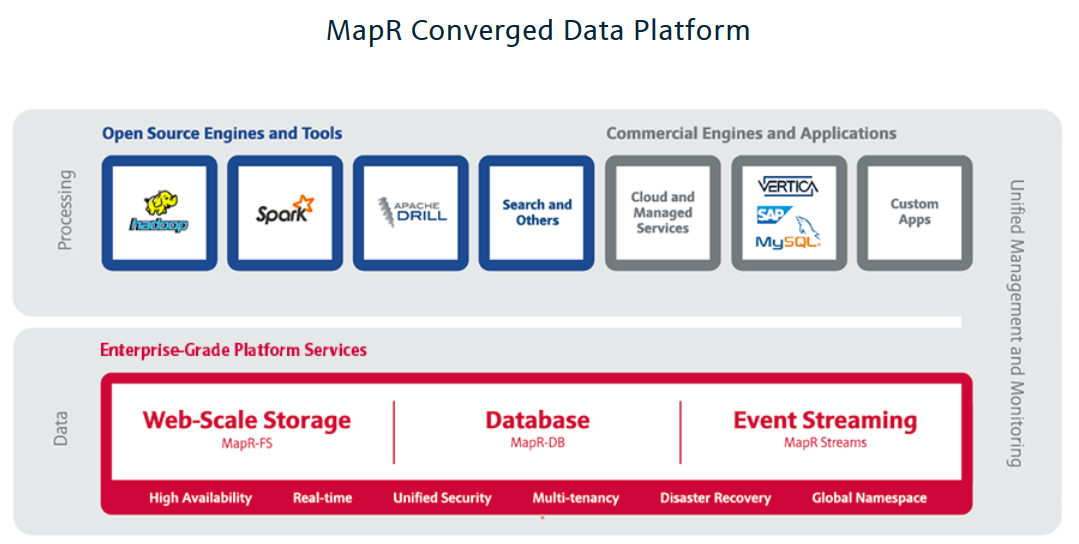Binding Customers to Chains: 150M Restaurant Patrons in a Hadoop Fishbowl

(Monkey Business Images/Shutterstock)
Chain restaurants have a paradoxical mission: grow a mass customer base, but do so based on one successful customer experience at a time. Big data, analytics, interactive customer relationship management and, in the case of one SaaS provider, Open Source software, play a critical role in helping regional and national restaurant brands create the ties that bind customers to chains and keep them coming back.
“Big data allows personalization and that is the definition of local, which is the future of the restaurant business,” said Stewart Slocum, CMO, Mimi’s Café, a chain in the Dallas/Fort Worth area.
Nurturing that sense of “where everybody knows your name” – even if the wait staff and maître’ d have never seen you before – is the mission of Fishbowl, whose SaaS customer engagement system is used by 230 chains (Applebee's, Texas Roadhouse, Buffalo Wild Wings etc.) at 70,000 restaurant locations to interact with roughly 150 million customers and track, extract data from and perform data analytics on 12 billion transactions per year.
Fishbowl began in 2000 as an email marketing company for restaurant chains, collecting customer contact information and emailing special offers, new menu items, location openings and the like. Over time, the company developed a database of customer information and an analytics platform based on data (open rates, increased visits and sales, etc.) spit out by the emails to measure email campaign effectiveness.
“Then, as restaurants got more sophisticated, they started to reach out to customers through other channels,” said Parijat Jauhari, Fishbowl’s VP Analytics and Product Management, “they started with email, then they went to SMS, mobile and now loyalty. They have all of these are different ways to market to customers.” So Fishbowl began developing a SaaS solution, collecting and integrating data from downloaded restaurant apps, messages, coupons (107 distributed million last year), email and POS. Data pours into Fishbowl’s analytics platform that’s used to develop individualized communications based on customers’ preferences, loyalty and other profile characteristics.
By 2013, as more restaurant brands partnered with Fishbowl, the company needed to scale and was running up against the limits of its existing SQL server-based CRM system. According to Jauhari said, with growing varieties and volumes of data and a requirement to refresh data daily, it became increasingly difficult and expensive to achieve the needed performance levels and zero downtime.
The decision was made to revamp its “intelligent marketing platform for restaurants” leveraging Open Source software to build an infrastructure that meets its own hyperscale needs and support the unique characteristics of the restaurant IT landscape. For itself, Fishbowl required multitenancy capabilities, so that each client restaurant company has its own data storage and analytics logical compartment; enormous storage capacity; and the ability to continually scale storage and processing without interrupting ongoing operations.
For the restaurant brands themselves, Fishbowl needs to ingest a about a dozen data formats – both structured and unstructured – and analyze them simultaneously so restaurants can get a comprehensive view of the customer based on multiple data sources, instead of piecing together customer activity based on a single data type at a time.
A tall order made more complex by restaurants’ tendency to use antiquated systems and file formats, including DBF files used by POS systems dating back to the 1990s. Restaurants, Jauhari said, need an integrated, multi-format solution because they don’t have the time to integrate siloed data themselves. “They want to get hot food hot and cold food cold to customers as fast as possible in a nice ambience,” he said. “They don’t like investing in new in technology.”
After a technology review, Fishbowl developed a new analytics infrastructure utilizing the MapR Converged Data Platform, which includes the Apache Drill SQL self-service query engine. MapR-FS, part of the MapR Platform, is also used to support tenant-level data isolation in Fishbowl’s environment. Combined with MapR’s read/write performance, the solution is faster and more scalable, and offers a unified analytics platform to account for new data sets as they are identified.
 “MapR was the only company able to bring in data from multiple POS transactional data sources, which is quite complicated, and have restaurants act on it,” Jauhari told EntepriseTech. “Restaurants don’t like to change their POS systems.”
“MapR was the only company able to bring in data from multiple POS transactional data sources, which is quite complicated, and have restaurants act on it,” Jauhari told EntepriseTech. “Restaurants don’t like to change their POS systems.”
He said the problem with Fishbowl's old SQL Server was scaling. Expanding the system meant shutting it down and installing additional RAM and storage, disrupting customers’ use of the platform. “As we onboarded more customers, the challenge with any traditional database or data warehouse was that we had to scale up, versus scale out. We needed faster processing over large data sets, you have to add more memory and more RAM.”
Enter Hadoop.
“What MapR and all the Hadoop technologies let you do is distributed computing,” Jauhari said, and enable scaling up of systems without a system shutdown. “You’re connecting multiple computers together. You don’t shut things down. Any time you get new customers, you can add more hardware, RAM, memory, storage as needed. Moving to the Hadoop stack, which is what MapR is, helped us bring in distributed computing. We can easily add new customers, and as a customer’s data set grew there was no problem, no downtime, we didn’t have to shut down.”
Jauhari said Fishbowl could have adopted Open Source on its own, but then they’d have to be involved with the Open Source community; any updates to the software they would have to implement themselves.
“What MapR does is act as the middleman between the Open Source community and a company like ours,” said Jaurhari. MapR notifies Fishbowl about Hadoop and Apache Drill enhancements and installs new releases. “We’re thinking about sending email campaigns and analyzing data. We don’t want to be in that business.”
Jauhari said Open Source also delivers strong cost savings. Fishbowl spends approximately one-tenth on licenses and a third on storage compared with its previous system. In addition, Apache Drill increased query speeds by five to 10 times, giving clients a more interactive query capability.
Looking to the future, Jauhari said restaurant brands will continue to look for faster interaction with their data and their customers. That means real-time and that means Spark – “Hadoop on steroids.”
“The big challenge we’re going to run into, as we get more and more customers and we start going into real-time analytics,” Jauhari said. “That means a customer walks into a restaurant, orders a meal, we do some real-time modeling and send the customer an offer in real-time to his inbox.”
A typical example: patrons who order spicy Asian food commonly order dessert as well, so a desert offer is sent to the customer via email, text message or via the app.
Other analytics developments include incorporation of mobile, social and survey data to support decision making on restaurant pricing and site location selection.
Jack Norris, MapR’s Senior Vice President, Data and Applications, told EnterpriseTech that Fishbowl’s platform represents the trend toward mission critical “operational analytics” – analytics delivered in timeframes that impact the business as its happening, which requires scale, speed and availability.
Earlier generations of data analysis, he said, meant “putting data into a precise schema or data cube, and it required a lot of administrative tasks to extract that data, to transform it, to load it into that precise format. What you saw was a series of different siloes in an organization, which meant there was a lot of delay in processing before it got into those siloes, and then there were a lot of difficulties in terms of how do you blend (the data).
“We’re seeing a lot of movement on different types of technologies to try to drive agility within an organization: how can they run faster, better take advantage of competitive windows, understanding customer behaviors and customer issues,” Norris said. “All that agility is translating into virtualization, containers, microservices. It’s focused on the compute layer. But there needs to be a corresponding change in the underlying data layer. So how do you drive the agility? We think that’s about convergence. Not converging onto a single server or box, it’s the ability to distribute processing across a broad array of competitive hardware on premises and in the cloud, but have the data flexibility to serve many different types of analytics and techniques.”










